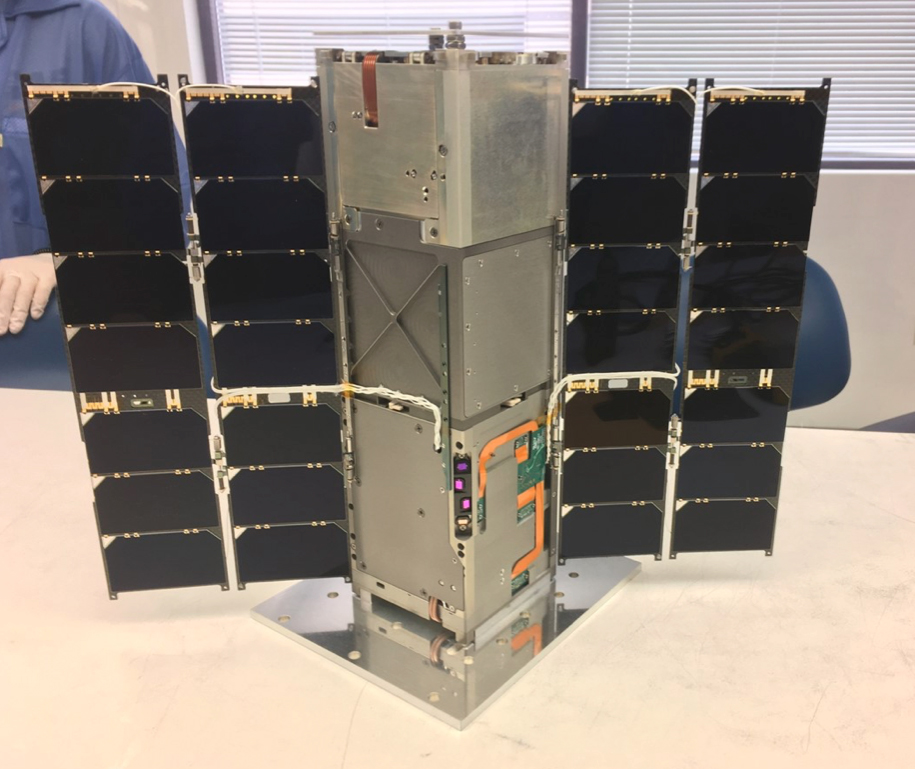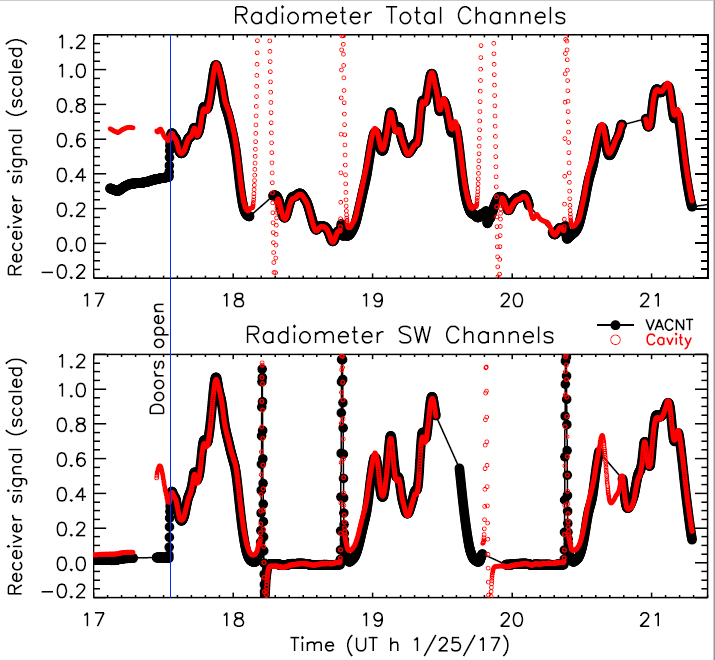
The Johns Hopkins Applied Physics Laboratory’s Radiometer Assessment using Vertically Aligned Nanotubes (RAVAN) CubeSat — which will demonstrate new technology to measure Earth’s radiation imbalance and predict future climate change — launched on Nov. 11 from Vandenberg Air Force Base, California. First data from RAVAN was recorded on Jan. 25, 2017.
Credit: APL/Blue Canyon Technologies
Press Release
RAVAN Earth Science CubeSat Records ‘First Light’ Data
The Radiometer Assessment using Vertically Aligned Nanotubes (RAVAN) CubeSat captured its “first light” data from Earth on Jan. 25, 2017. Light from Earth reached four radiometers onboard the spacecraft, and this data will help RAVAN — a project led by the Johns Hopkins Applied Physics Laboratory in Laurel, Maryland — measure Earth’s energy imbalance (EEI) and better predict future climate change.
RAVAN was one of seven CubeSats launched Nov. 11 from Vandenberg Air Force Base in California. RAVAN, which is roughly the size of a loaf of bread, is a technology demonstration of a notional constellation that would provide global coverage of Earth’s total outgoing energy throughout the day and night. RAVAN is funded by NASA’s Earth Science Technology Office.
“The first light radiometer telemetry we received confirms that the doors are open and that RAVAN is collecting data as designed,” said Bill Swartz of APL, RAVAN principal investigator. “We are calibrating the instruments and increasing data collection, and we look forward to studying the data we’ll be getting in the coming weeks.”
The RAVAN team will study Earth’s energy imbalance, the difference between the amount of energy from the sun that reaches the Earth and that is reflected or radiated back into space. EEI is known to be essential for understanding and predicting changes in the planet’s climate.
“Despite its diminutive size, we anticipate big results from RAVAN,” said Swartz, “which was made possible because of a partnership involving many people at APL, NASA, and two small businesses in Maryland and Colorado.”
